 Human Origins
Human Origins
 Paleontology
Paleontology
Evolution Theater: Smithsonian Whitewashes Human Origins

We had the opportunity to revisit the Smithsonian’s National Museum of Natural History and wrote about it here and here, with many accompanying photos. Having seen the one-sided promotion of Darwinism at the nation’s own museum, you should not be surpried that the Hall of Human Origins continues the dark tradition of Darwinian views about humanity.
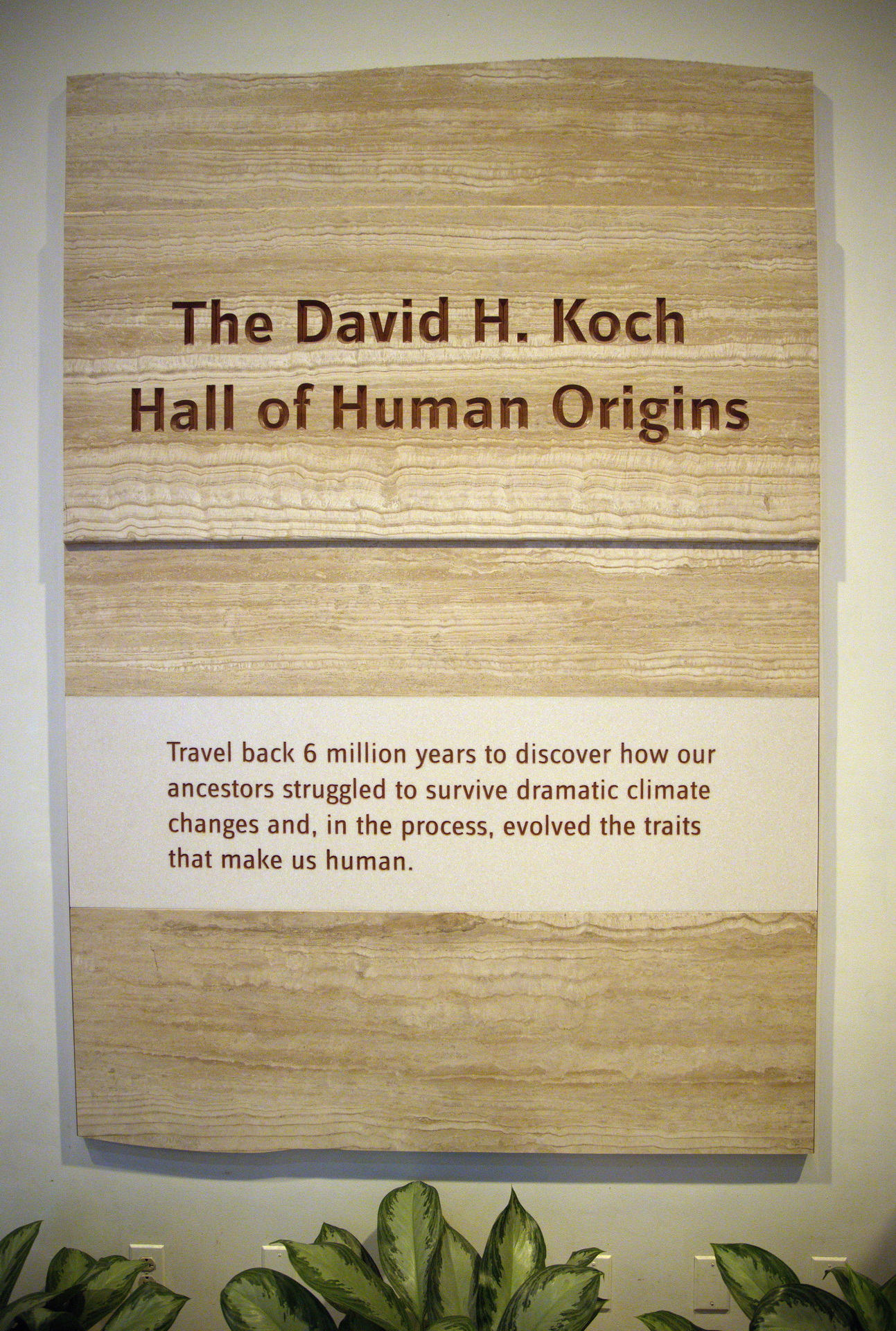
This poster teaches Darwinian gradualism, but the Cambrian explosion and other fossil explosions defy this simplistic description.
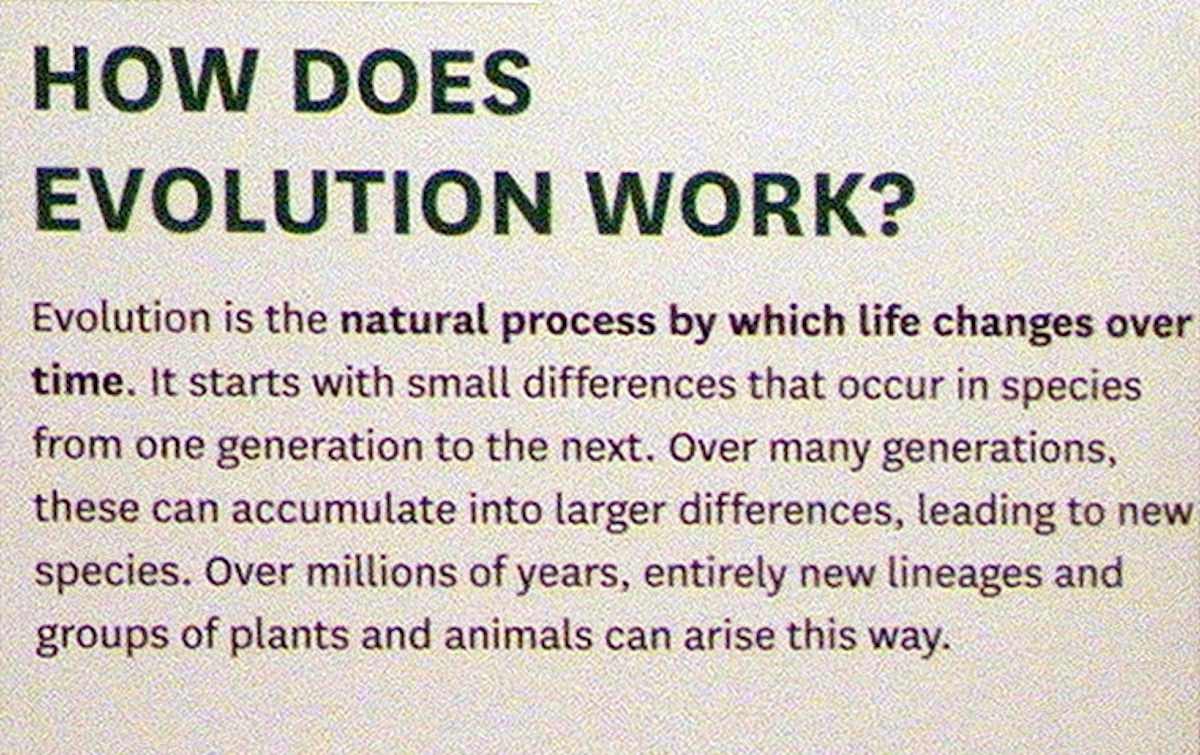
Entering the Hall of Human Origins, the viewer is greeted by a panorama of species becoming more “white” as they evolve. One exception is the Hobbit of Indonesia (Homo floresiensis) which is portrayed as exceptionally dark. This selective focus ignores the many blunders and hoaxes of paleoanthropology (Piltdown Man, Nebraska Man, Ida) and the less credible fossils (Ardipithecus, Orrorin). Nor does the exhibit mention the continual changes of opinion about early man that appear frequently in the media (e.g., New Scientist, Phys.org). Instead, visitors are treated to a single line of descent mimicking the discredited “march of man” icon that keeps popping up in cartoons. Real paleontologists admit a reticulate pattern where it’s not at all clear who is ancestral to whom. This complexity is ignored.

A Path to Whiteness
Inside the Hall of Human Origins, these same six specimens are portrayed on a path to whiteness. Visitors seem to accept this portrayal without rioting because, after all, this is “science.” Note that skin colors, hair, and nose shapes are not preserved with bones.

“What does it mean to be human?” This large poster asking a central question focuses only on physical features and habits: making tools, eating meat from large animals, gathering at the hearth, growing bigger brains, communicating with symbols, having a longer childhood and adolescence. Then suddenly, just 10,500 years ago, farming and cities arise. Any problems with this picture? Does it look like Darwinian gradualism? If large-brained Homo erectus and Neanderthals were migrating around the world, building tools, using fire, and hunting large animals 430,000 years ago or more, why did it take them so long to plant a crop, domesticate animals, or start a city?

A Big Deal About Lucy
The museum makes a big deal of Lucy. Their portrayal has many more bones than the original! The reconstructed bones have different colors, but the feet are completely imaginary, and the original hip bones, crucial to the claim of walking upright, were fragmented and modified to fit an upright-walking narrative. Most of the skull consisted of bits of bone, and it’s not even sure if all the bones were from the same individual, or the same species. Visitors are not given this damaging information.
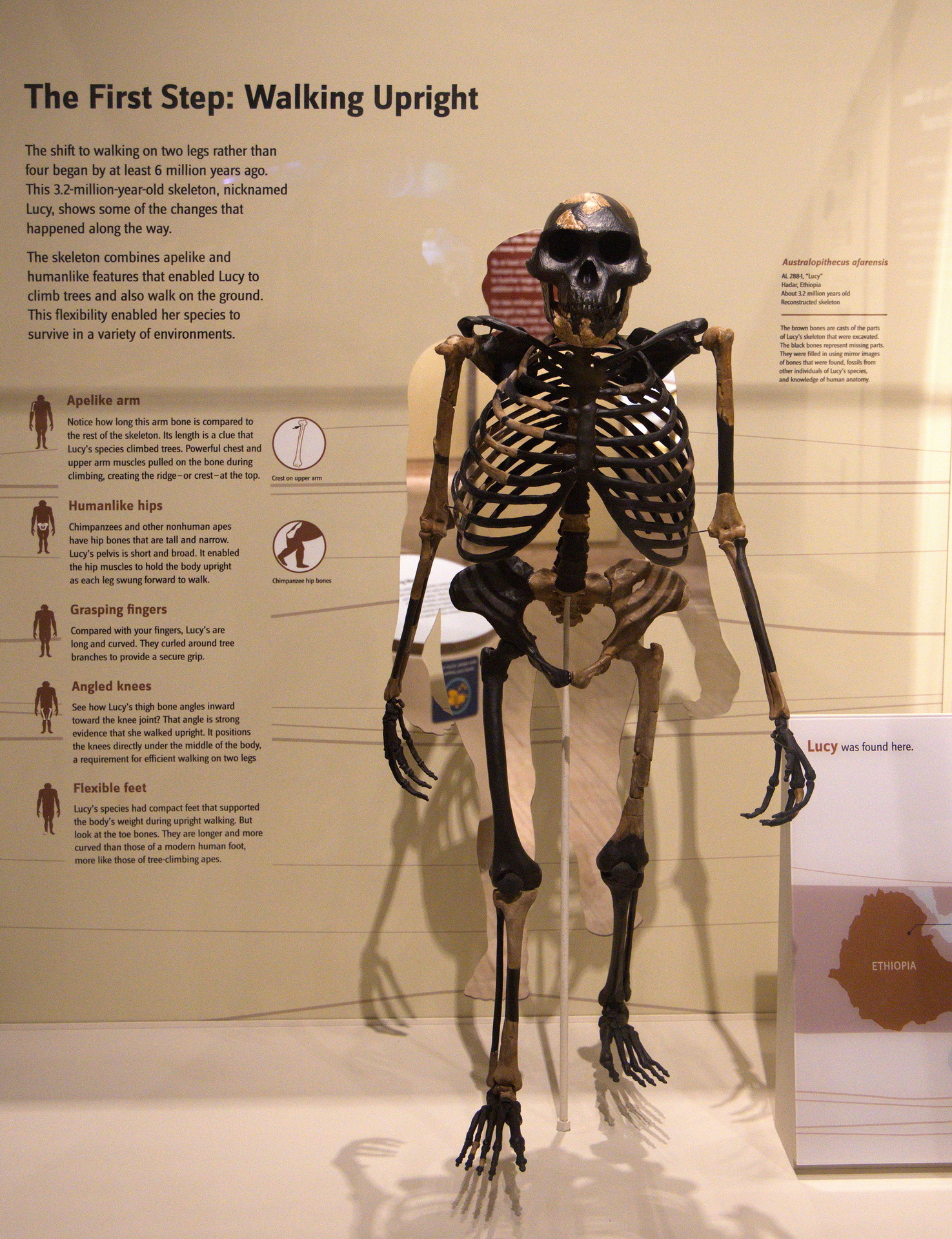
The display on “bigger brains” pretends that challenges create gray matter. “During this time period early humans spread to new regions, encountering many new environments on different continents,” it says. “These challenges, along with an increase in body size, led to an increase in brain size.”
If this were a law of nature, all animals would get bigger brains the more the challenges they face. That is clearly not the case for butterflies, worms, birds, or most species. The display at the museum shows a continuum of supposed human ancestors, without calling out the huge gap between Australopithecines and members of Homo. Some paleoanthropologists say the various manifestations of Homo are arbitrary distinctions without a significant difference.
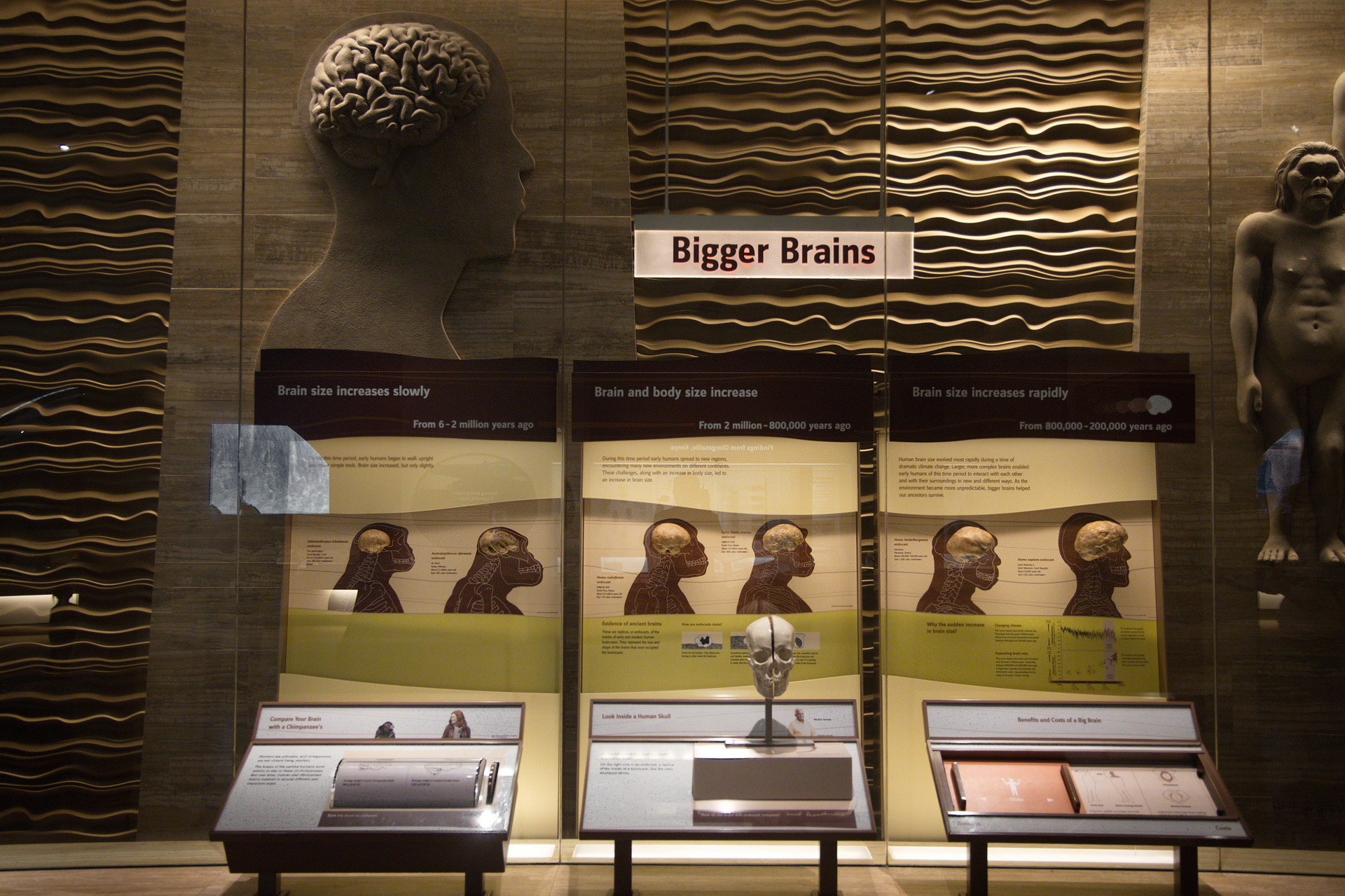
A visitor reads about how climate change created Homo erectus (Turkana Boy) and Neanderthal Man. Considering the large differences between living people, could a similar display be constructed from skeletons of Homo sapiens?
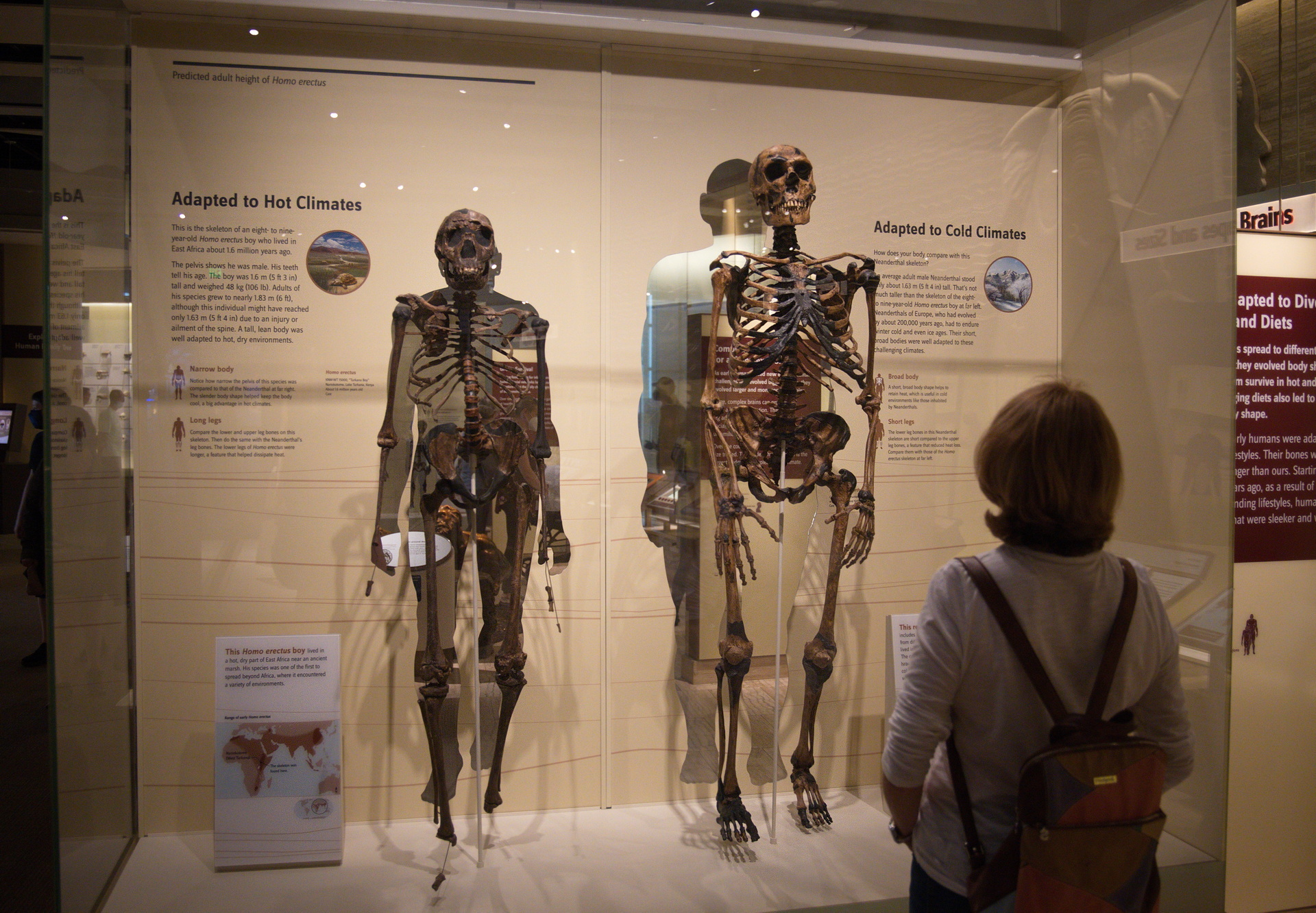
Another poster shows how “humans evolved in response to a changing world” (mostly climate change). Interestingly, the chart of paleoclimates shows humans in Africa evolving in hotter periods than today. Presumably the present climate crisis is happening too fast for humans to evolve adaptations to it.
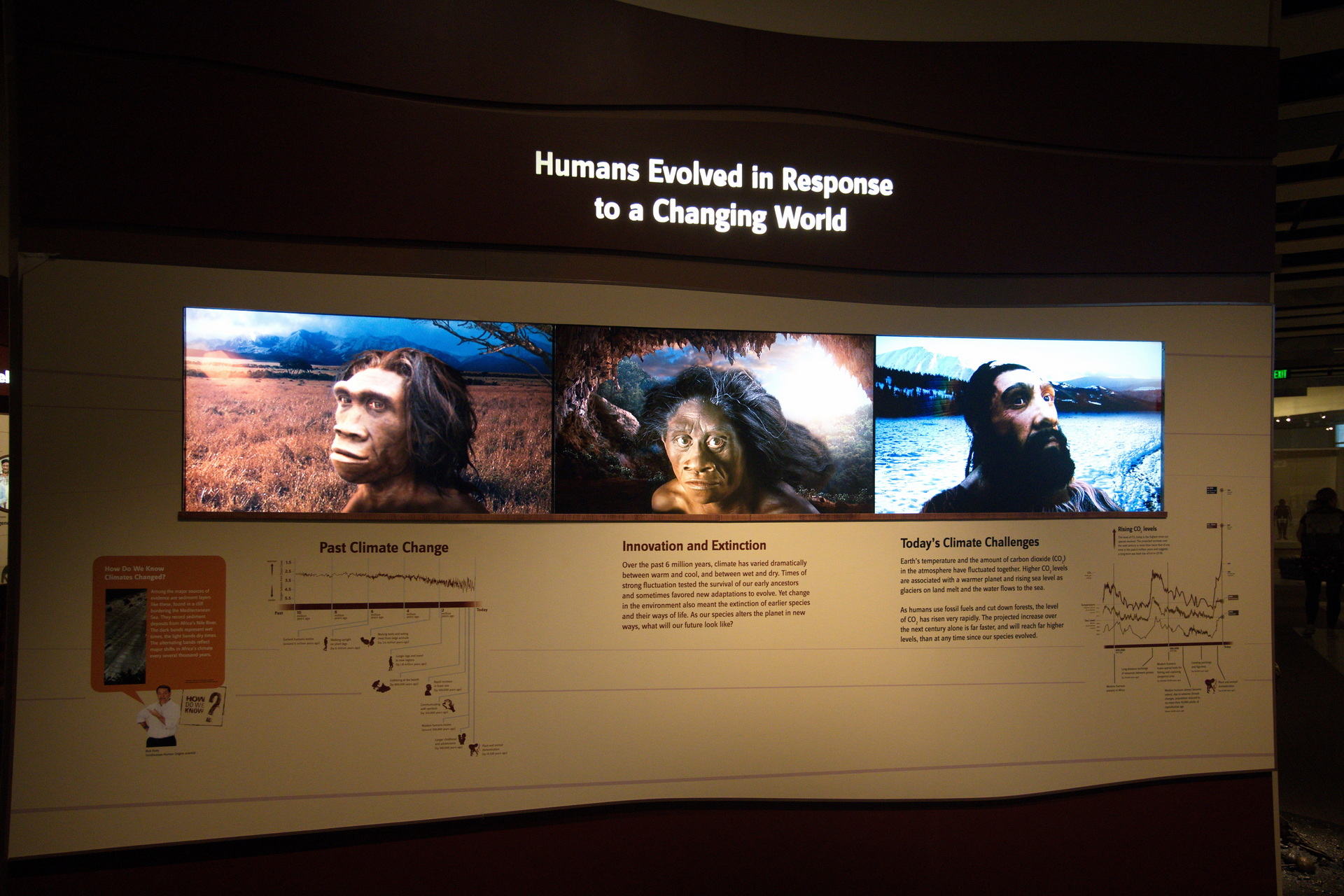
Abstract Reasoning and Human Exceptionalism
The poster about language fails to engage the serious philosophical problem of abstract reasoning that makes humans exceptional. That question is deflected by asking, “When Did Humans Start Talking?” as if the evolutionary emergence of language can just be assumed. “Scientists are not sure,” the caption reads, then speculates that complex behaviors “probably required language” — another instance of the fallacy that needs cause design. If that were true, crows should have been writing operas and lions books on philosophy long before now. They had much more time to grow bigger brains and face challenges than humans allegedly did. Or does Darwinism only work its magic on humans and not on other species?
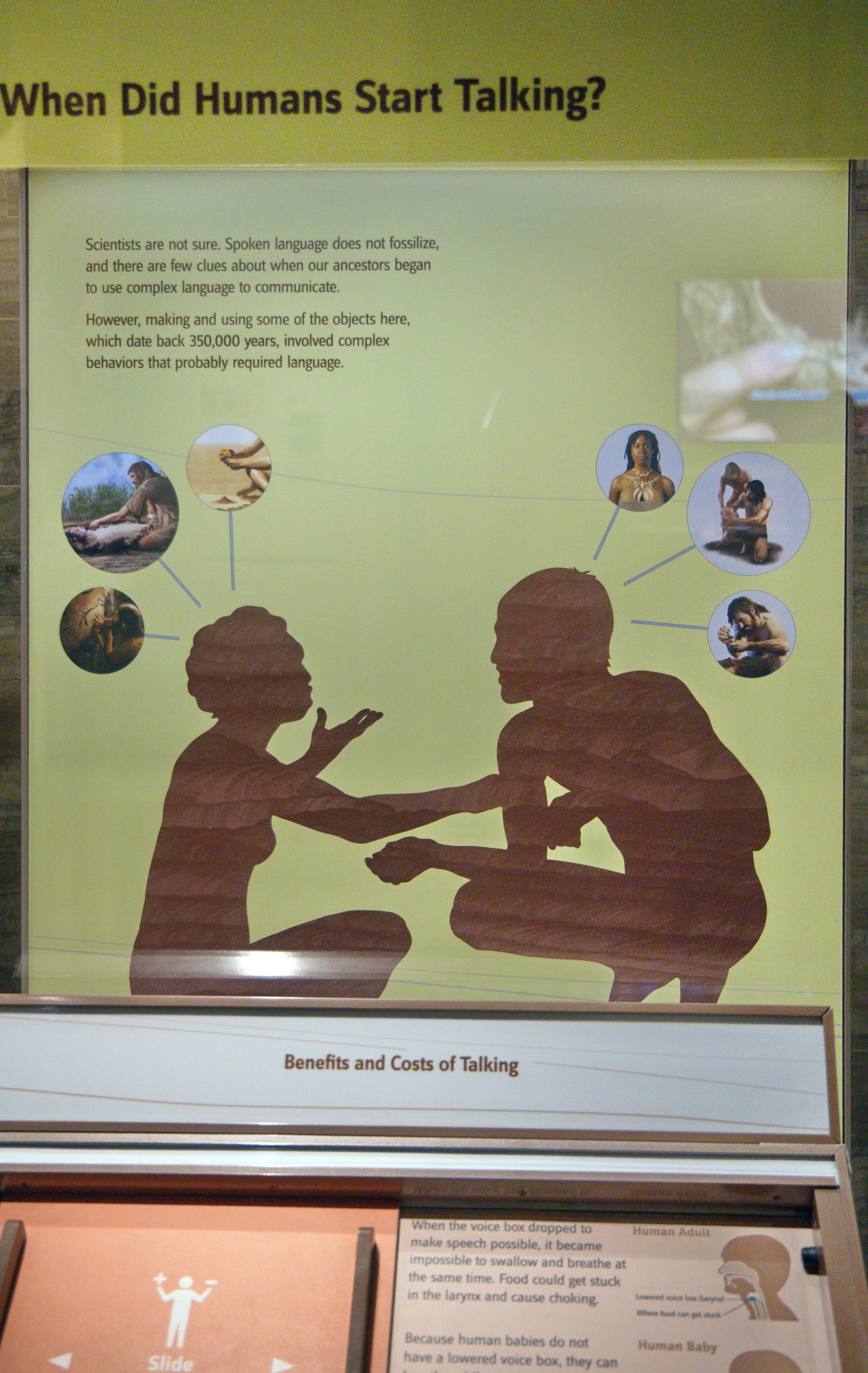
Within the Hall of Mammals, visitors step over a floor display of “hominid” footprints found in Kenya. Artwork indicates these are 1.5 million-year-old footprints made by Paranthropus or Homo erectus. What they don’t say is that the much-older footprints thought to have been made by Lucy’s species in Laetoli are indistinguishable from those of modern people. They are attributed to Australopithecus africanus because members of Homo should not have evolved yet in their timeline. But how reasonable is it to imagine an ape with human feet?

In keeping with the museums’s program to teach that humans are only evolved animals, this display with a big orang-utan reads, “You and your closest relatives.” (See the image at the top of this article.)
The Hall of Human Origins concentrates on six hominids, but strangely ignores most of the fossils that used to be so popular in the 1960s when National Geographic regularly ran cover stories on the findings of the Leakey family. This shows that evolution itself evolves.
What’s Hot, What’s Not
A small display called “What’s Hot in Human Origins?” examines three news items: Homo naledi, Australopithecus sediba, and Neanderthal DNA.

All three of these finds are controversial:
- Homo naledi is classified as Homo, but has some apelike features, the sign says, ignoring numerous debates about the provenance of the bones, their connection with other fossils, and conflicts with the dating. The big bold headline above, though, confidently declares, “Welcome to a new member of our family tree!”
- Another sign asks, “Is Australopithecus sediba our ancestor?” but then notes that the genus Homo had a 400,000-year “head start” over this questionable fossil. “Stay tuned for future discoveries and debates about Australopithecus sediba.” Evolutionists, the conservators of knowledge, will be sure to make it match the explanation under, “How does evolution work?”
- Neanderthal DNA shows that Neanderthals interbred with modern humans and with Denisovans, erasing the species distinctions between them. Accelerating discoveries have rendered Neanderthals the equals of modern humans in almost all regards. So much for what evolutionists taught about Neanderthal Man for over a century as beetle-browed, hunched-over, cave-dwelling pre-humans. None of the recent revisions are emphasized in the display, which continues to portray them as distinct from us.
Viewers of this presentation are shown apes becoming humans over 6 million years.
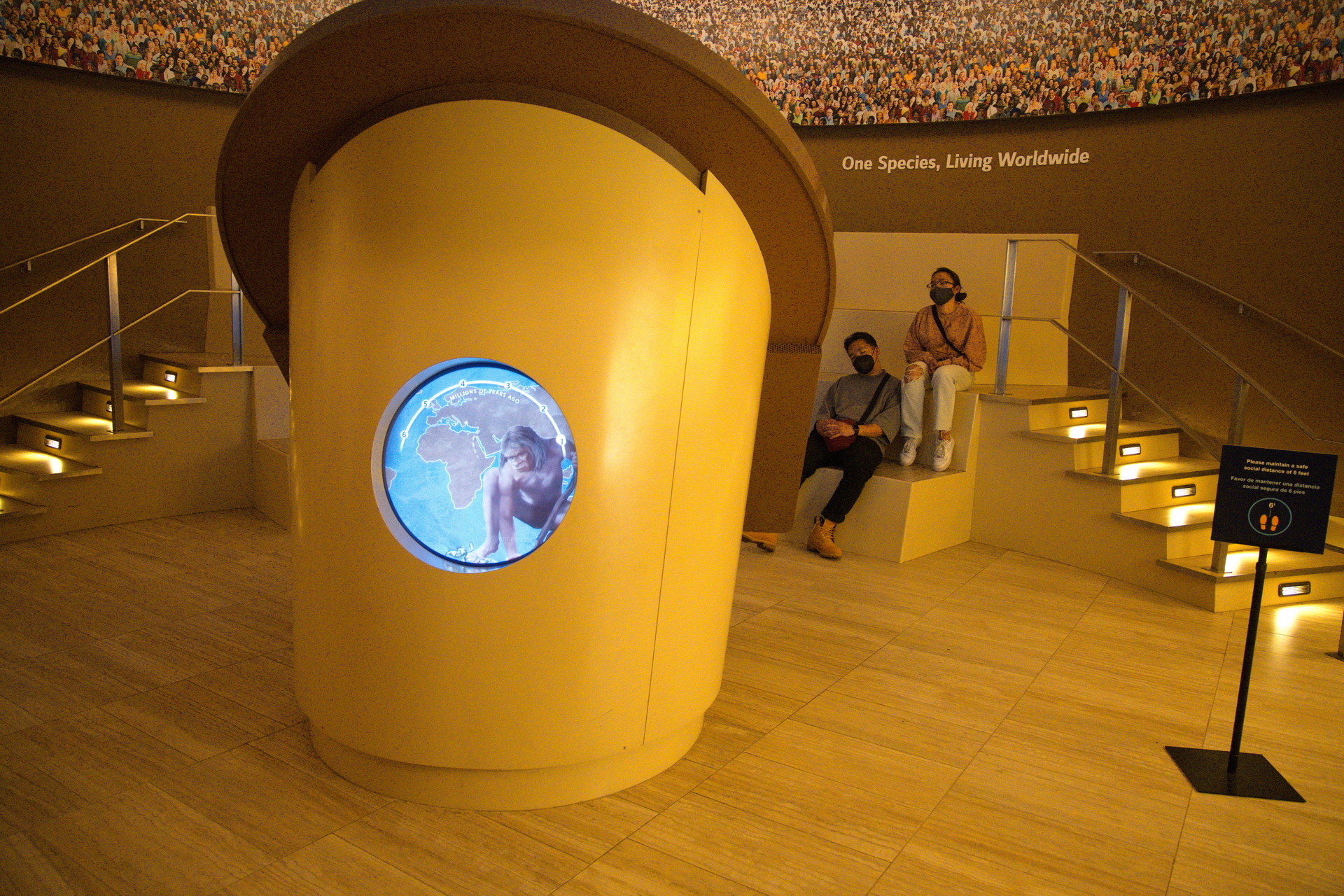
Evolution Theater
In short, the National Museum of Natural History is a grand instantiation of “Evolution Theater.” In this dramatization of Darwinian propaganda, only one point of view is presented as scientific. Humans are glorified apes that have been evolving by Darwinian gradualism for millions of years. We are mere animals, and yet we are destroying the earth (a moral issue) with climate change. As humans evolved, their skin got lighter: an opinion not so much stated in words as illustrated in artwork. This museum admits nothing of evolution’s racist past when scientists felt it appropriate to exhibit dark-skinned human beings in zoos.
The contrast is striking between this museum and the National Archives just 350 yards away, where a document fading under glass proclaims the basis for all human freedom and dignity. “We hold these Truths to be self-evident, that all Men are created equal, that they are endowed by their Creator with certain unalienable Rights, that among these are Life, Liberty, and the Pursuit of Happiness,” wrote Thomas Jefferson 245 years ago, in agreement with the 56 Founding Fathers who signed that declaration. Something else is self-evident. The more a citizenry is taught that “science” has determined people to be glorified apes evolving by a mindless, purposeless process of natural selection, the more at risk will seem those rights once believed endowed by a presumably non-existent creator.
Now watch the recent Science Uprising episode, “Human Evolution: The Monkey Bias”:
